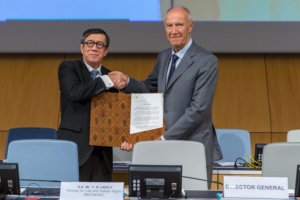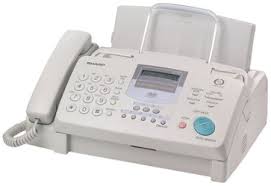The majority of US trademark registrations lack “incontestable” status, because the owner of the registration has not filed “Section 15” papers at the USPTO. (I have blogged here about what “incontestable” status means and why a trademark owner might want to gain “incontestable” status.) In this article I will talk about ways to gain “incontestable” status economically.
Indonesia joins Madrid Protocol

On October 2, 2017, Indonesia deposited its instrument of accession to the Madrid Protocol at the International Bureau of the World Intellectual Property Organization. The Madrid Protocol will thus enter into force for Indonesia on January 2, 2018.
This brings to 100 the number of members of the Madrid system. Continue reading “Indonesia joins Madrid Protocol”
2016 Tote Boards published
Somehow it got put on the back burner, but finally I have sorted and published the results for the 2016 US Utility Patent Tote Board and the 2016 US Trademark Tote Board. You can see all of the Tote Boards here.
Why you probably can’t send international faxes any more
 A couple of weeks ago I had the great honor to visit at WIPO with the heads of some of the PCT processing teams. These are the people at the International Bureau who interact with callers (applicants and patent practitioners) who have questions and problems relating to PCT. One of the things that they mentioned to me, that I found puzzling when I first heard it, is that in recent months they have received ever-increasing numbers of complaints from people who call to report that they try to send faxes to the International Bureau and are unable to do so. Upon reflection I now realize the likely cause of this problem. And it is definitely not that there is some recent malfunction in WIPO’s fax machines.
A couple of weeks ago I had the great honor to visit at WIPO with the heads of some of the PCT processing teams. These are the people at the International Bureau who interact with callers (applicants and patent practitioners) who have questions and problems relating to PCT. One of the things that they mentioned to me, that I found puzzling when I first heard it, is that in recent months they have received ever-increasing numbers of complaints from people who call to report that they try to send faxes to the International Bureau and are unable to do so. Upon reflection I now realize the likely cause of this problem. And it is definitely not that there is some recent malfunction in WIPO’s fax machines.
Continue reading “Why you probably can’t send international faxes any more”
Thailand joins Madrid Protocol

On August 7, 2017, Thailand deposited its instrument of accession to the Madrid Protocol at the International Bureau of the World Intellectual Property Organization. The Madrid Protocol will thus enter into force for Thailand on November 7, 2017. Continue reading “Thailand joins Madrid Protocol”
A new reason to consider Madrid Protocol

The reader will be familiar with the many factors to be explained to one’s clients to help them decide whether to use Madrid Protocol on the one hand, or ordinary Paris Convention national filings on the other hand, to accomplish foreign filings. Now, starting July 1, 2017, there will be one more factor to be taken into account. Madrid Protocol will have a convenient mechanism by which the holder of an International Registration may request a recording to introduce an indication concerning its legal nature or to change that indication once it has been recorded. Continue reading “A new reason to consider Madrid Protocol”
Headed over to Opera Samfaina
I’m just headed over to Opera Samfaina for the e-Trademarks listserv reception. Hope to see everyone there!
Meet the Bloggers XIII was a success


Meet the Bloggers XIII was a success! The reception was on the beach in Barcelona. The surf crashed on the sand. Cruise ships and sailboats passed by on the ocean. Tapas and beverages were consumed. Over a hundred people attended.
One more event to attend and then you can feel you have accomplished nearly all of your INTA goals. Yes, the e-Trademarks listserv reception lies ahead, tomorrow (Tuesday) evening.
The two receptions to attend in Barcelona redux
Hopefully everybody who is in Barcelona for the INTA meeting already has their ribbons to attend the two must-attend receptions:
- the Meet the Bloggers reception on Monday evening, and
- the e-Trademarks Listserv reception on Tuesday evening.
The weather in Barcelona is delightful just now. MTB XIII will be at Xup Xup which is a beachfront venue. The e-Trademarks reception will be at Opera Samfina which is in the middle of La Rambla.
See you there!
If you only attend two events in Barcelona …
If you only attend two events in Barcelona during the INTA meeting, these are the two events to attend … Continue reading “If you only attend two events in Barcelona …”
